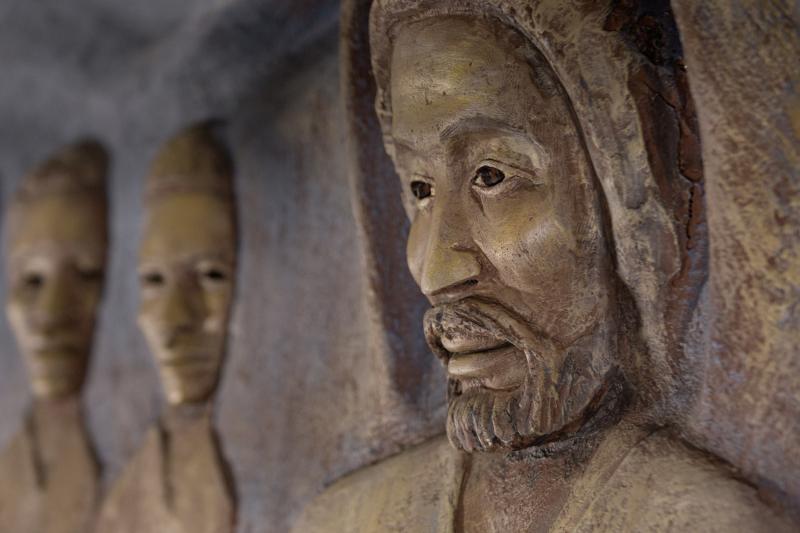They’re showcasing Black messianic representation in art, history, and media!
The Smithsonian National Museum of African American History and Culture (NMAAHC) has announced a new online exhibition titled “Jesus’ Hair Like Wool.” This digital showcase explores the historical and contemporary ways Black figures have been depicted as messianic figures in American religion and popular culture, using art and media as its lens.
One of the highlights of the exhibition is a 3D rendering of “The Last Supper” by sculptor Akili Ron Anderson. Originally created in 1982, the sculpture underwent a fascinating rediscovery in 2019 when it was found behind a temporary wall at a former church building in Washington, D.C.
Curated by Teddy Reeves, “Jesus’ Hair Like Wool” explores a particularly significant period during the Civil Rights Movement, NMAAHC shared on the exhibit’s site. In the 1960s, as the fight for desegregation and equal rights intensified, a parallel discussion emerged regarding the traditional portrayal of Jesus Christ. With countless images of Jesus depicted as a white man dominating Christian iconography, African Americans and other minority groups began questioning the validity of worshipping a deity who didn’t reflect their own race. This period also saw religious scholars publishing research suggesting Jesus may have visited Africa during his lifetime.
The exhibition goes beyond traditional religious figures and explores the roles that Black male leaders played in empowering their communities. These leaders, including Father Divine, Sweet Daddy Grace, Prophet Noble Drew Ali, Marcus Garvey, and Martin Luther King Jr., utilized various methods to inspire their followers. They delivered powerful sermons, organized social justice movements, challenged white supremacy, and advocated for living a purposeful life on Earth.
The NMAAHC website also highlights another online exhibition drawn from the Johnson Publishing Company archive. This showcase explores the profound impact religion has had on the African American experience. Photographs and stories paint a vivid picture of the diverse ways Black people have practiced their faith and how religion served as a source of strength in the fight for social equality and human dignity.
“Jesus’ Hair Like Wool” and the Johnson Publishing Company archive exhibition offer valuable insights into the complex relationship between race, religion, and leadership in American history. Both online showcases are free to access and can be found on the NMAAHC website.
Cover photo: Smithsonian NMAAHC Launches New Online Exhibition Dedicated to Black Jesus / Credit: NMAAHC

